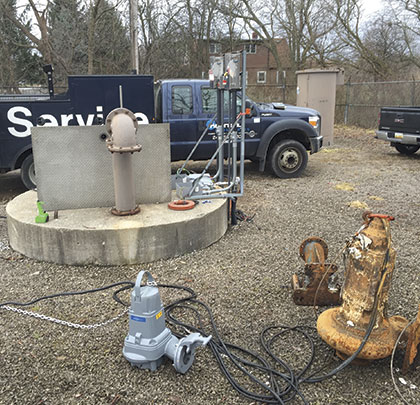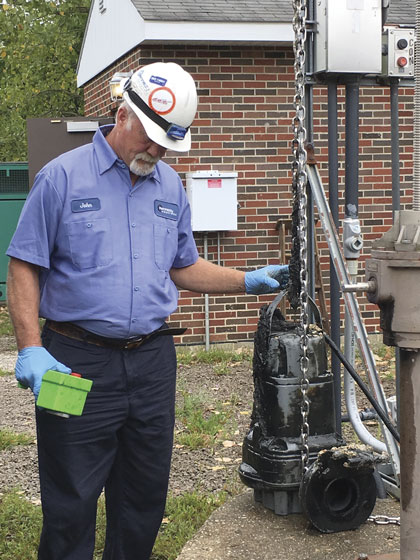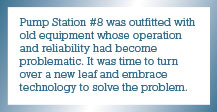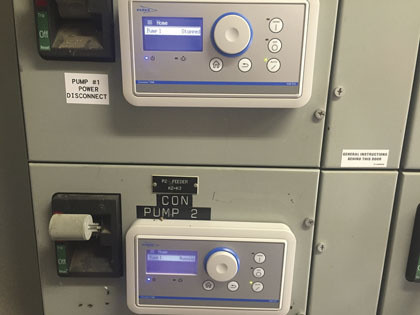Genesee County, Michigan, is considered to be part of the greater Mid-Michigan Area. The population as of the 2010 census was about 425,000, making it the fifth most populous county in the state. Named after Genesee County, New York, it was created in 1835 and fully organized by 1836. Covering 639 square miles, Genesee County has thirty-two cities, townships and villages, with the City of Flint as the largest urban center.
INSIDE GENESEE COUNTY
The Genesee County Drain Commissioner, Division of Water and Waste Services (GCDC-WWS) is responsible for the construction and maintenance of the sanitary sewer collection system and water distribution system. This includes establishing rates, certifying capacity, sewer modeling, capital improvement planning, master planning, and receiving bids and awarding contracts for construction among local units of government.
GCDC-WWS also offers engineering and project management services to municipalities, which combine low costs, better knowledge of the infrastructure, and a wealth of resources to use as needed. Engineering services are turnkey and include planning, design, construction, and project closeout, making the entire process as easy as possible for the client. GCDC-WWS also provides a master plan review and sewer and water modeling evaluation.
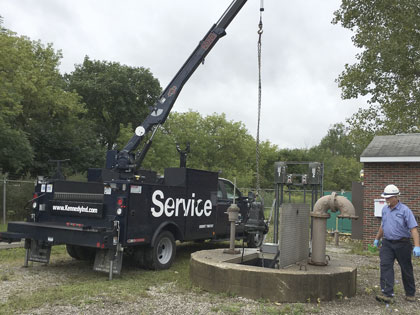
Featured Image: Two new Flygt Concertor pumps being prepared for installation.
Above: Removal of old pump from Station #8.
Among GCDC-WWS’s many responsibilities is the operation of the Anthony Ragnone Treatment Plant (ARTP), located in the Township of Montrose. The ARTP facility was originally placed in service in the 1960s, with major expansions completed in the 1970s and 1980s. This facility has been an integral part of Genesee County’s system to provide safe, effective wastewater treatment. The recently completed screenings, grit and scum removal systems, and fine bubble aeration diffuser improvements, as well as the new wet weather facilities, disinfection improvements, and pump station upgrades allows GCDC-WWS to effectively continue to improve effluent quality to comply with state and federal regulations, and more importantly, provide watershed protection.
GCDC-WWS owns and operates three wastewater treatment facilities: ARTP, Sanitary Disposal District #3 Treatment Plant, and Sanitary Disposal District #7 Lagoons. The collection system for ARTP service area includes over 1,700 miles of 8-inch through 96-inch sanitary sewers and seventy-three pump stations. ARTP final effluent discharges into the Flint River, located at the northwest end of the county in Montrose Township.
In 2007, GCDC-WWS completed the construction of its Northeast Extension Sewer Project, which split and rerouted some of the system’s flows. They began reviewing the current status of ten of their major sanitary sewer pumping stations. Pump Station #8, servicing Genesee and Richfield Township’s, was among the stations being considered for rebuilding the existing pumps or replacing them with new units.
PUMP STATION #8
Pump Station #8 contained two horizontal dry pit and two submersible non-Flygt pumps that were installed in 1988. The GCDC-WWS Operations and Maintenance Department has rebuilt the pumps several times over the years. De-ragging of pumps was part of their standard operating procedures when running station routes. When it became time once again to rebuild the pumps, GCDC-WWS decided against the process. Simply rebuilding the pumps did not restore them to their original head conditions and flows. In addition, there were longevity considerations between repairs, ongoing ragging problems, spare parts issues, and service consideration for the older model pumps. It was also desirable for the new pumps to match actual flow and head conditions required. GCDC-WWS no longer wanted to throw good money at old technology, so they turned to Xylem distributor and trusted supplier Kennedy Industries for answers and resolution and a more permanent and logical solution.
Kennedy has been in business since 1959 and had already been able to solve many pump clogging problems for the county by introducing Xylem’s N-Pump technology. Pump Station #8 was the perfect place and time to introduce Xylem’s new Flygt Concertor, a smart wastewater pumping system that senses the operating conditions of its environment, adapts its performance in real time, and provides feedback to pumping station operators. The county was eager to listen since it already had other Xylem products in its inventory.
MEETING CUSTOMER NEEDS
There are several reasons Flygt Concertor technology appealed to them:
Interchangeability throughout many of their pump stations reduces the number of spare pumps the County needed to keep in their inventory. This created the ability, in an emergency, to move pumps from a lower priority station to an immediate priority station by simply resetting the pump parameters. This results in less risky downtime and contributes to the return on investment calculation.
The Xylem technology eliminates the need to purchase variable frequency drives, which was also a selling point because eliminating them opened up valuable space. Flygt Concertor’s built-in technology saved the county time and money by eliminating the need to upgrade controls.
The county was most impressed by the automatic non-clog reverse function of Flygt’s Concertor pumps. County personnel were already familiar with the reverse function troubleshooting method because they often had to employ it with their current pumps. But Concertor’s built-in intelligence with the auto reverse function reduces life cycle cost dramatically by not having to send personnel out to the station, thus eliminating the inherent danger involved working with high voltage while switching motor leads around.
On this retrofit project, elimination of the variable frequency drives resulted in a huge reduction in both installation and equipment costs. Additionally, the Energy Minimizer functionality of the integrated pump controls significantly reduces operating energy costs. The old outdated guide rail assemblies were replaced due to extreme corrosion; Kennedy supplied the new rails and the county installed them. Human Machine Interfaces (HMI) were installed for pump feedback, a feature the county did not have with the old pumps at Station #8. Being able to receive and monitor running signals, amp draws, voltage, speed, faults, starts, runtime, runtimes yesterday versus today, KWH used today versus yesterday, and troubleshooting suggestions are all value added when purchasing the Flygt Concertor, all of which greatly reduce risk of personnel injury.

Close-up of new Concertor pump.
The new pumps began operating in March 2017 and thus far results have been impressive. There have been zero maintenance callouts. Furthermore, the N-impeller self- cleaning design plus the ability to auto reverse during a “soft clog” has eliminated the need to pull the pumps and clean them on a weekly basis.
Xylem’s Flygt Concertor is a fully integrated system that offers a unique synergy between software functions and state-of-the-art hardware. Concertor’s system design works in harmony to reduce your total cost of ownership while delivering the highest quality and reliability. This new wastewater pumping system senses the operating conditions of its environment and adapts its performance in real time to provide feedback to station operators. With high operational flexibility, Concertor takes wastewater pumping to a whole new level. For more information, visit www.flygt.com.
_______________________________________________________
MODERN PUMPING TODAY, December 2017
Did you enjoy this article?
Subscribe to the FREE Digital Edition of Modern Pumping Today Magazine!
![]()


